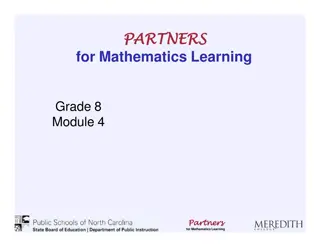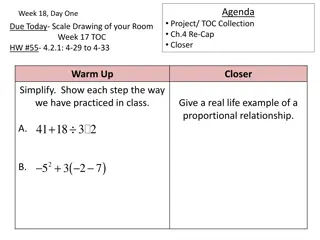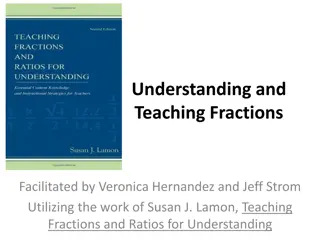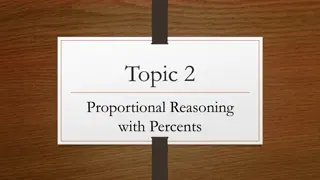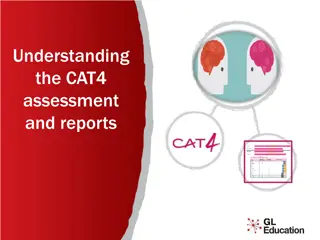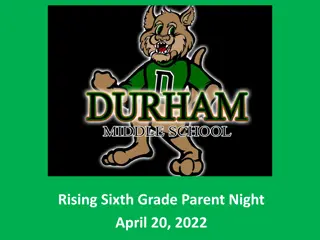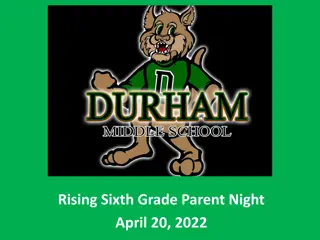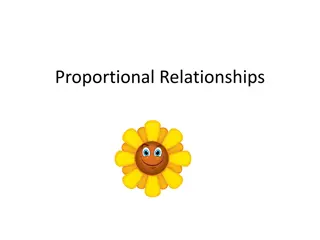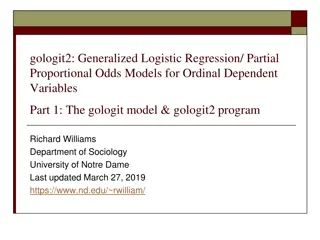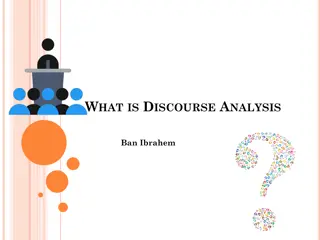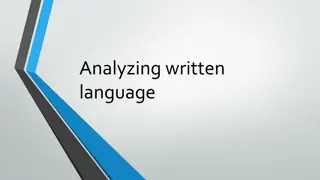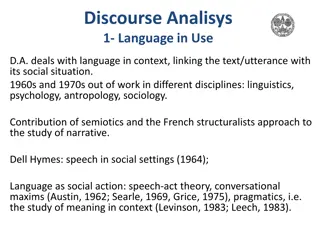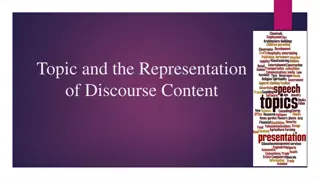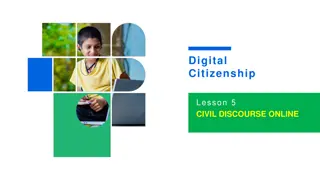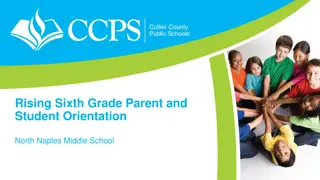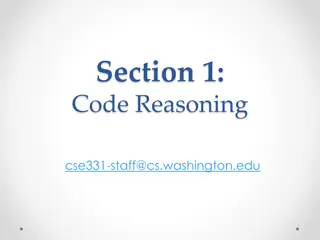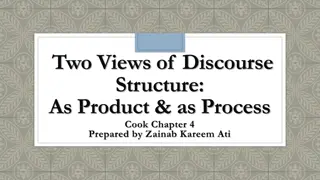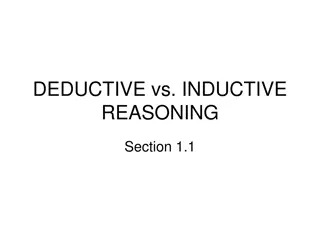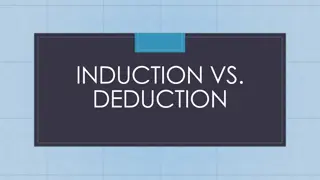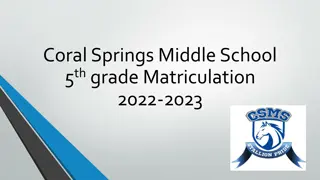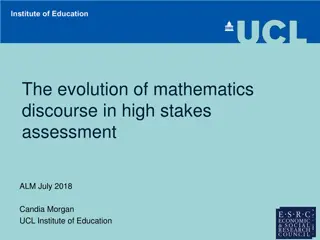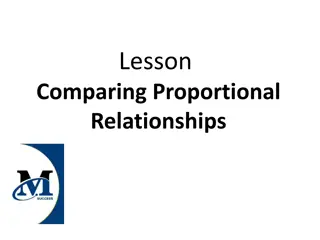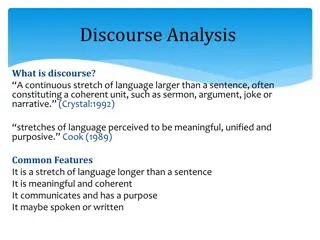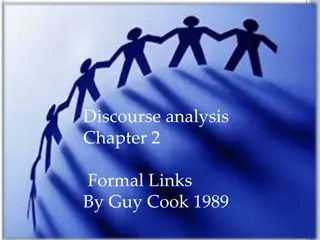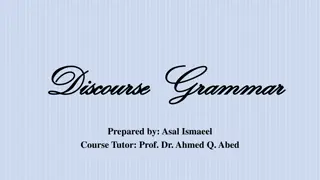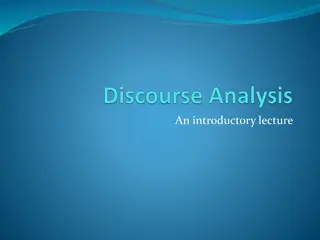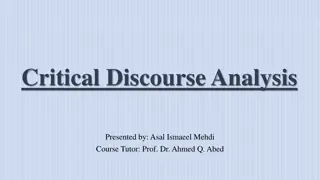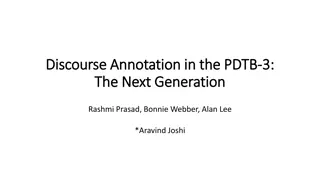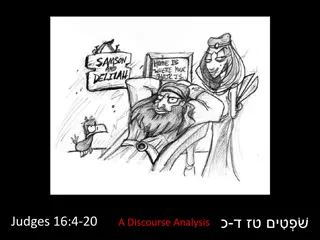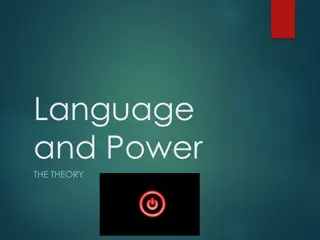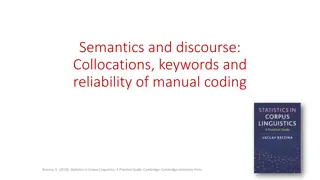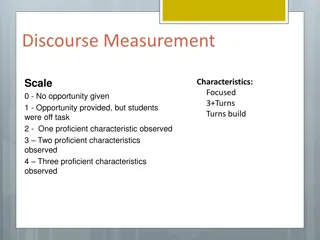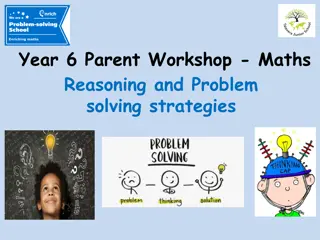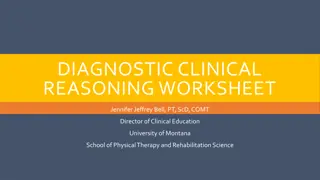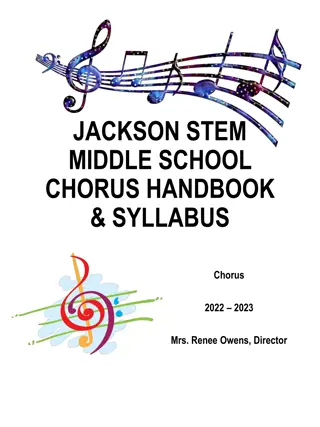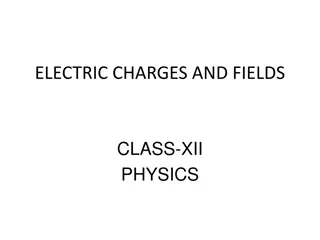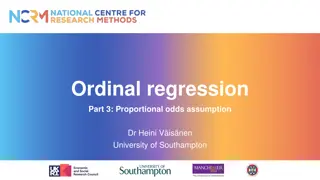Enhancing Proportional Reasoning in Online Discourse for Middle School Students
The research focused on supporting middle school students in developing proportional reasoning skills in an online setting. Techniques such as breakout rooms, notice and wonder routine, silent thumbs ups, and prompting student-student interaction were utilized to foster meaningful online discourse. Challenges were identified in using multiplicative reasoning.
Uploaded on Oct 03, 2024 | 0 Views
Download Presentation

Please find below an Image/Link to download the presentation.
The content on the website is provided AS IS for your information and personal use only. It may not be sold, licensed, or shared on other websites without obtaining consent from the author. Download presentation by click this link. If you encounter any issues during the download, it is possible that the publisher has removed the file from their server.
E N D
Presentation Transcript
Supporting Online Discourse through Proportional Relationships La Tier E. & Da'Joun W. Dr. Bergner, Dr. Groth Salisbury University Summer Research 2020
Proportional reasoning is key to the middle school mathematics curriculum (CCSSM, 2010). Introduction However, research showed students struggled with proportional reasoning and making senses of multiple representations that foster multiplicative reasoning.
Purpose Our challenge was to help students develop proportional reasoning in an online environment. Our research questions were: What technique(s) help to foster online discourse? How does students proportional reasoning develop during online discourse?
Participants and Procedures We had 4 students who just finished 7thgrade. Their pseudonyms are Steve, Olivia, Mike, and Maya. All students participated in our seven 1- hour sessions and pre- and post-interviews.
Instructional Cycle Instructional Cycle Gather & Analyze Data Set Goals & Design the Lesson Implement the Lesson
Online Discourse Techniques Breakout rooms: This Zoom feature allowed us to pair students. It was especially helpful for Maya and Mike, who were reluctant to participate in whole-group discussions. Notice and Wonder: This routine allows for all students to think deeply about the context, while providing their thoughts on the content before we further explore. Before asking students to solve problems, we occasionally asked, "What do you notice?" and "What do you wonder?" about the problem and/or context. Silent thumbs ups: This technique has students raise their thumb quietly when they agree with what the instructor has said or they have an answer. This fostered student responsiveness and active listening. Prompting student-student interaction: This routine had students to respond or paraphrase other student responses. This helped students develop reasoning and communication skills. Chat box: This feature allowed us to receive questions and/or answers from students via chat. This provided students with a more discreet way to communicate their responses, and it provided an undisturbed space for students to think.
Conclusion We found it was difficult for students to use multiplicative reasoning in certain contexts. We chose activities that developed proportional reasoning as students investigated graphs and equations and then, revised them to fit the capabilities and interests of our students. We also recommend that others teaching online, employ techniques such as breakout rooms and private chats to enhance and deepen the learning process for students.
Acknowledgments Acknowledgments We would like to thank our mentors, (Dr. Bergner & Dr. Groth), and student participants.This research project would not have been successful without you! This Photo by Unknown Author is licensed under CC BY
References Illustrative Mathematics (2020). IM 6-8 math v. III. Retrieved from: https://curriculum.illustrativemathematics.org Langrall, C. & Swafford, J. (2000). Three balloons for two dollars: Developing proportional reasoning. Mathematics Teaching in the Middle School, 6(4), 254-261. Reeves, C. (2006). Putting fun into functions. Teaching Children Mathematics, 12(5), 250-259. Stanford Center for Assessment, Learning, & Equity (SCALE, 2019). edTPA secondary mathematics assessment handbook. Stanford, CA: SCALE 1-51. Sun, K., Baldinger,E., & Humphreys, C. (2018). Number talks: Gateway to sense making. Mathematics Teacher, 112(1) 48-54. Watanabe, T. (2015). Visual reasoning tools in action. Mathematics Teaching in the Middle School, 21(3) 152-160. Williams-Candek, M. (2016). All talk and more action. Mathematics Teaching in the Middle School. 22(3) 162-170.


